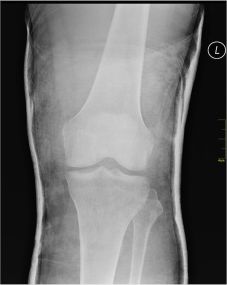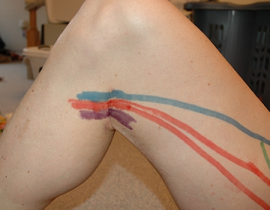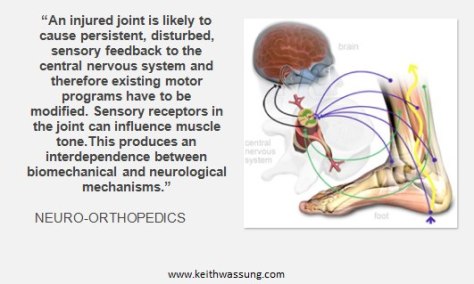 A lot of athletes and especially runners can be plagued by knee pain. It may start by hurting after exertion. Then that gets worse. Then it hurts during exertion and by the time most folks are motivated to do something about it, significant damage has been done. Now you have a knee problem. But what caused it?
A lot of athletes and especially runners can be plagued by knee pain. It may start by hurting after exertion. Then that gets worse. Then it hurts during exertion and by the time most folks are motivated to do something about it, significant damage has been done. Now you have a knee problem. But what caused it?
COMPENSATION UP
The knee is a relatively simple joint consisting of four joint surfaces moving back and forth with body weight. The bending of the knee acts as a secondary shock absorber during walking and running. The strike and roll of the 52 joint surfaces in the foot is primary one. If the primary shock absorber fails, the secondary must compensate. Compensation largely stops at the knee. Because your knee picks up the slack, your foot is less likely to hurt, which hides its role in the problem.
COMPENSATION DOWN
 Above the knee, are the hip and the spine. The spine alone has 174 joint surfaces. These stabilize to the pelvis. The pelvis uses four (4) muscles on each leg to stabilize across the knee. Here you can see the position of the three inside muscles, effectively using the small knee joint as a torque anchor. The fourth is on the outside of the leg. The knee potentially under stress from below, and also from above.
Above the knee, are the hip and the spine. The spine alone has 174 joint surfaces. These stabilize to the pelvis. The pelvis uses four (4) muscles on each leg to stabilize across the knee. Here you can see the position of the three inside muscles, effectively using the small knee joint as a torque anchor. The fourth is on the outside of the leg. The knee potentially under stress from below, and also from above.
JOINT SURFACES
I use the relative number of joint surfaces to highlight the complexity of the structures involved. Logically, you’d expect the structure with the larger number of moving parts to have the higher likelihood of trouble. The spine has 174, the foot 54, and the knee 4. The fact is, your knee can’t function optimally with stress coming from above and/or below.
PUTTING IT ALL TOGETHER
The logical conclusion to all of this is that if you are active and you have knee pain before, during, or after activity, you need to find out why. What you discover may change your life.
Note: This article is purposely targeted at forward running and the degenerative changes leading to knee replacement; it addresses the knee from that perspective. Thus, the motion of the knee and the parts are over-simplified to illustrate concepts. Lateral running is more complex, but the concepts illustrated here also apply.
Dr. Robert Johns is a chiropractor serving the greater Birmingham area from his office in Mt. Laurel, AL.
